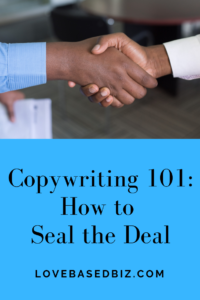If you want people to take action and buy what you’re selling, you’ve got to ask for the sale.
Yet I can’t tell you how many ads, websites, brochures, sales letters, branding campaigns, etc. are floating around out there without the ask—the “call to action.”
Let’s start by defining call to action (CTA).
It’s a clear statement that spells out the action you want the reader to take.
Here are some examples of a typical call to action:
• Hurry in today.
• Buy now.
• Call now.
• Visit now.
• Click here now.
• Sign up now.
I know—they aren’t terribly sexy. However, if you want more clients, customers, leads, income, etc., it is an essential component of your marketing materials.
Right now, you may be thinking, “But isn’t it obvious? Why else would you be running an ad if you didn’t want people to buy what you’re selling?”
Good question. And you’re right; if people stop to think about it, they likely realize you’re wanting them to buy from you.
However, the unfortunate truth is that your potential clients/customers aren’t going to spend that much time thinking about it.
People have too much going on in their lives to spend much time and energy on your marketing materials. So if they do read them, but there is no clear call to action, they’ll likely say, “Oh, that’s nice,” and go on to the next thing.
Even worse is what happens to those interested in your offer. Without a CTA, how do they know what their next step should be? Do they pick up the phone? Go to a specific website? Visit a store?
Here’s the thing: If they don’t know what they should be doing, chances are they won’t do anything at all.
So yes, you need to tell your potential clients/customers exactly what you want them to do. (Remember, people are busy, and if you don’t make doing business with you easy, they probably won’t do business with you at all.)
Let’s take another look at the call to action examples above. Did you notice they all have something in common?
The word “now” (or, in the case of the first one, “today”).
Those words create urgency. You see, if people think they can buy from you at any time, they’ll say, “Oh, I can do this later.”
The problem is that “later” rarely occurs. (Again, people are busy! They’ll forget, or find something else.) That’s why it’s soimportant to give them a reason to buy from you right now, while they’re interested.
Adding the “now” (or some other urgency or scarcity technique—maybe “for a limited time,” or “There are only a few copies left” type of statement) is a great way to push people into doing what you want them to do right now instead of risking the sale.
 Now, let’s talk for a moment about those branding campaigns I mentioned earlier that often lack a CTA.
Now, let’s talk for a moment about those branding campaigns I mentioned earlier that often lack a CTA.
Typically, these are campaigns shown on national television by big corporations (think McDonald’s, Nike, Starbucks, Target). In these instances, businesses are building a brand that will cause you think of their specific business first when you’re interested in purchasing a product.
For instance, when you’re hungry for a quick meal, you may think McDonald’s. Need athletic shoes? You think Nike. When you’re craving a cup of joe, you think Starbucks, etc.
While there’s nothing wrong with branding campaigns, they are nearly impossible to test, track, and/or tweak. They either seem to work, or they don’t. And if they don’t, it’s very difficult to know what to tweak in order to improve the response rate.
However, branding is still very, very important. As a business owner, you need a good brand and you need to communicate that brand effectively. And sometimes it makes sense to run a branding campaign.
But consider the campaign that includes a specific call to action, like “Come in before the sale ends Saturday,” or “Call before Friday to receive your free gift,” etc. When you have a campaign with a specific CTA like these, you’re working with a “direct response campaign,” as you’re asking the client/customer to respond directly.
Direct response campaigns can be tested, so you have a good idea what’s working and what’s not (and can tweak the campaign accordingly). And, if the campaign doesn’t require getting a salesperson involved (i.e. if the call to action is for the customer to whip out his wallet right then and there), then the campaign will just run itself (and make money all by itself).
(Note: While a CTA is a powerful element of your direct response campaign, it’s not ONLY about adding one in at the end of your copy. There are other important elements to include, too, if you want a successful direct response campaign.)
In general, I advise combining a branding campaign with a direct response campaign. Clearly communicate your brand in your ads and promotional materials, AND take advantage of some direct response techniques at the same time.
Just make sure you don’t forget the call to action!
Want more copywriting training? Check out my Love-Based Copywriting System book right here.

 10 Things to Consider Before Launching a Writing Business
10 Things to Consider Before Launching a Writing Business How the Pandemic Helped Me Stop Worrying and Start Writing
How the Pandemic Helped Me Stop Worrying and Start Writing 7 Tips for Launching a Copywriting Business
7 Tips for Launching a Copywriting Business The Importance of Personality Part 2: Let’s Add It to Your Writing
The Importance of Personality Part 2: Let’s Add It to Your Writing The Importance of Personality Part 1: Is Your Website Dreadful?
The Importance of Personality Part 1: Is Your Website Dreadful?
Leave a Reply